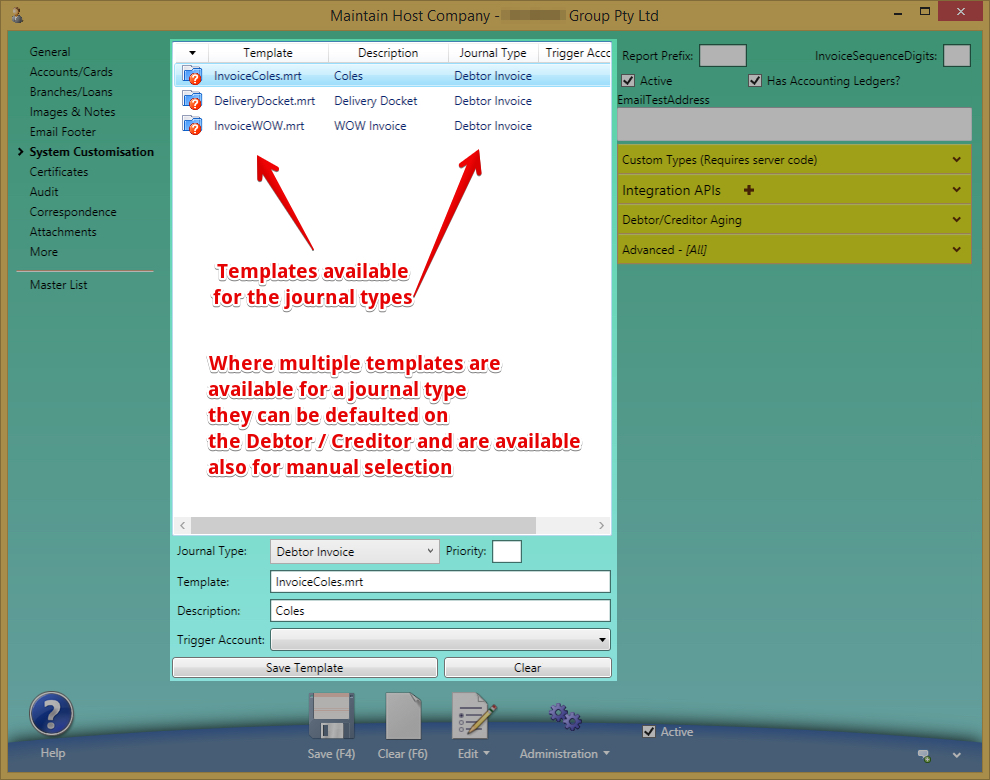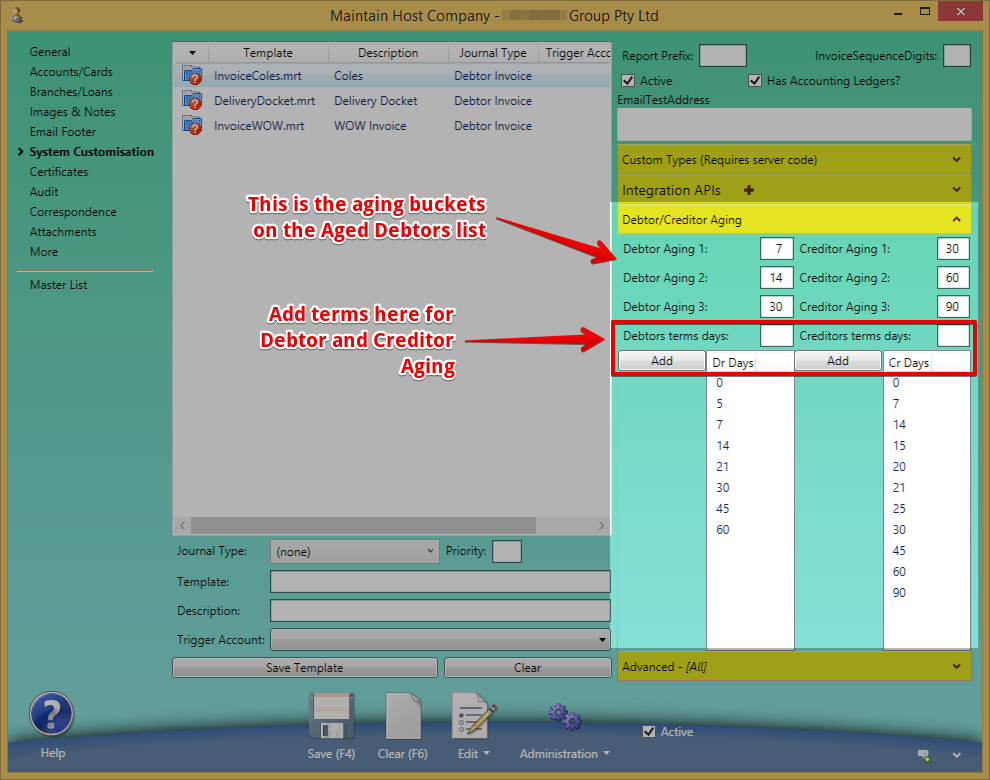| Table of Contents |
|---|
...
- Cash sale entity code is the default cash sale debtor
- Minimum GP% and Target Markup is used to:
- colour prices on price lists below the minimum amount
- Can alert managers to sales orders below minimum GP%
- Auto Allocate invoices - used when a payment is entered and will allocate the oldest invoices to the payment
- Auto off credit hold - removes customers and orders from hold (only those on hold due to debt) when a payment removes the hold requirement
- Max Debtor write-off adjustment - allows users with Secure Features List and their impacts to write off small amounts - see Getting orders off hold and out the door#Savethepaymentandupdatetheallocations
- Max Creditor write off adjustment - allows users with Secure Features List and their impacts to write off small amounts - Supplier Invoices and Payments#SmallAmountWriteoffs
- Fee service - determines the service to be added to the invoice for cheque payment charge
- Default price list - will default for all new debtors. Note that each price list has unique values for each branch in the system.
...
- New Debtors Require Approval - will limit the creation of debtors to users with Secure Features List and their impacts
- Geo Locate Entities - all addresses when saved will be geolocated with Lat Long so can be viewed on maps. Note only valid addresses that can be found by Google will be located
- Require PIN ConfirmAnonymousRego -
- Claim Fuel Tax Credits
- AutoRound Generated invoices - Auto-rounds where the payment method is cash
- Allow Pending Refunds
- Department mandatory on expense journals - self explainatory
- Enforce branch on orderless debtor journals - will not be able to save the journal unless each line has a branch
- New Entities must have contact detail = either a phone number or email address before can save them
- Nightly - defer unfinished scheduled events
- Weekly: Calculate raw sales data - creates a table used by the forecasting tool of each week of sales
- Daily - send bookings digest
- Use perpetual financial document numbering - alternatively can have it reset each month or each year and use the month / year in the number
- I sell primarily to businesses (distributor) - changes the default from Markup to Gross Profit as default in price lists, sets sell price as incGST
- Email remittance advices - will automatically email remittance advices when saved
- Nightly: Email Statements - will email statements required by Stop Supply process
- Allow Drop Ship sales order lines - enables Drop Shipments - supplier sends direct to customer
Entity and Debtor Profiling
...
- Print templates
- A print template defines the layout of the report generated for a journal type.
- The print template must be built by an our developer before it can be assigned to a journal type.
Print templates can be attached to emails that are sent from the system - see Entering Email Templates
Info When the system is looking for a report to use it looks in the following order:
- The report name (eg invoice.mrt) prefixed by the search code of the host company, eg SOULFRESinvoice.mrt or KARMAinvoice.mrt
- The report name prefixed by the host company Report Prefix, eg SFinvoice.mrt
- The report name with no prefix, eg invoice.mrt
- Journal Type
- The type of journal that the template applies to.
- Description ::A description of the use of the template.
- Template ::The file name of the print template. This will be provided by the our developer.
- Trigger Account ::is the account that will trigger the email to be sent
- The type of journal that the template applies to.
...
- Can create a list of contact methods that will be used on prints and emails from the system using Contact Types
Bank Accounts
see - Creating and Managing Bank Accounts
...
Templates used by journals instead of the default templates. Trigger account is not mandatory.
Debtor and Creditor Aging Terms
- Enter the number of days for each of the 3 Aging buckets normally 30,60,90 days
- Term days are then based on:
- Invoice - days from invoice date
- EOM - days from end of month including the invoice
- Prepay - before goods are sent
- ROG - receipt of goods
- Loan - between trading entities both in the system - example another company you own - or amongst a group of franchisees/ franchisor
Report prefix
- Report Prefix is custom prefix of invoice documents across all Debtor Invoices (Default is INV)
...
Advanced Area
Audit Logins - see Audit Log
GS1 Prefix
EDI ID
SMS from - default
...
Track all the licenses, certifications and other documents at a company level here - see Certifications, SOP Training Tracking, License Management
More
Contact Info
key communication emails to be used in email templates and on documents
...

